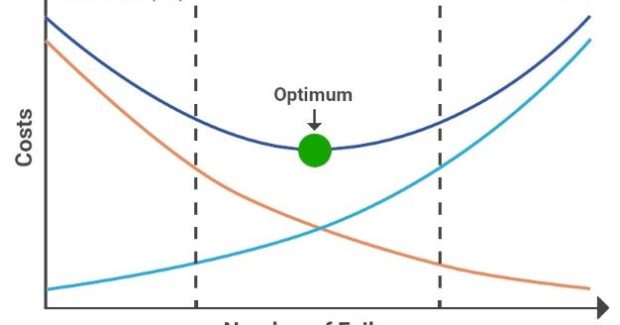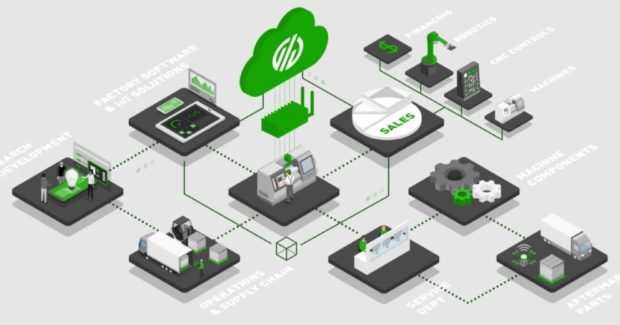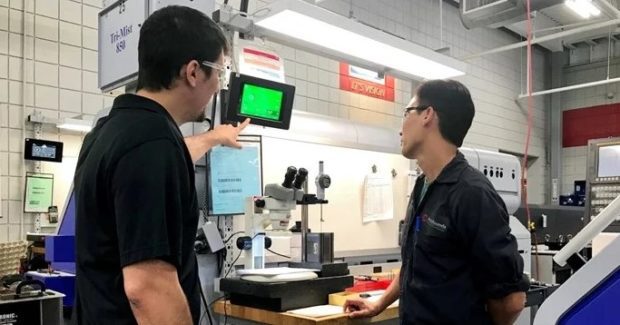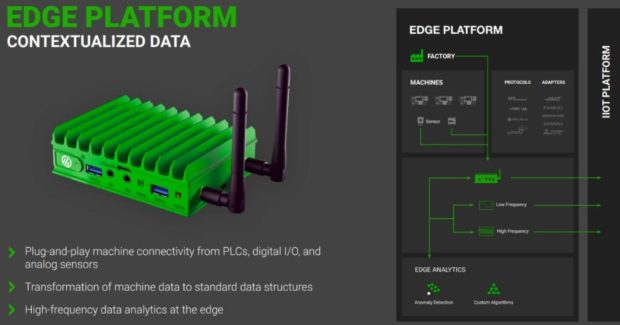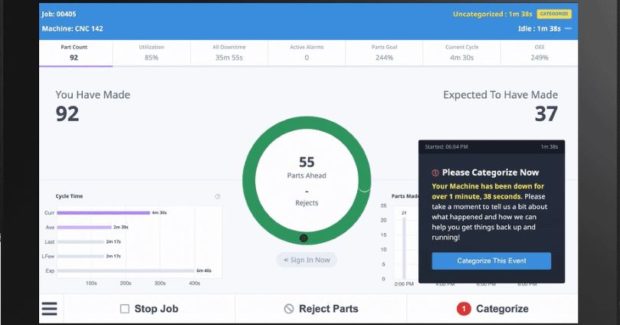Machine Data Collection as a Foundation for Smart Manufacturing
Machine data collection enables data-driven manufacturing, which drives factory floor optimization.
Posted: August 4, 2021
Digital By Design
By Graham Immerman
Automated manufacturing equipment (CNC machines if you will), and the people who operate this equipment, are the beating heart of any manufacturing operation and represent one of the largest capital expenses for manufacturers. These machines are worth hundreds of thousands of dollars and produce more data than that of any other industry, yet this data is not being captured or analyzed to improve efficiency despite all of the innovations in robotics and automation.
These machines produce hundreds of data points every millisecond, and the data structure is different for every machine. This makes it incredibly important to standardize the data across all the different machines. However, this is difficult to do for certain pieces of equipment.
It’s not as simple as standardizing via OPC-UA or MTConnect, because only a fraction of machines support those protocols. We have customers who have spent YEARS attempting to leverage DIY solutions to collect and transform data into standard models from their assets, manually coding data points one by one, machine by machine. This often results in years of custom development and integration before obtaining initial value, a terrible misallocation of resources for manufacturers.
The insights and actions driven from the data provides the foundation for manufacturers to grow their business and differentiate themselves competitively. Today, manufacturers find themselves at different stages of a journey to leverage data and the digital thread to optimize and automate their business processes.
Machine Data Collection: A Vital Component in Smart Manufacturing
CNC machine data collection begins with connecting your machines via a variety of methods, including both wired and wireless solutions.
Once data is able to be collected, it is contextualized and standardized to be used in real time dashboards and notifications, as well as historical reports for deeper analysis. But this is only the beginning.
Machine data represents the foundation of the digital thread, empowering an unlimited number of use cases to optimize and automate business processes, allowing manufacturers to grow their business and differentiate themselves competitively.
However, the value provided by machine data can only be used effectively if it is automatically captured and transformed.
What we have seen with customers that approach this with paper-based and other manual solutions is that the production data is far less effective, as it is delayed, inaccurate, uncontextualized, and does not scale beyond simplified use cases. Or worse, it is filled with gaps or nonexistent.
On the other hand, accurate real time data automatically captured and transformed from machine assets creates a solid base for capturing insights and driving value.
Performance can be baselined across similar machines, lines, and plants with confidence knowing the underlying data is accurate. Machine asset performance can even be measured and compared to similar assets across a particular industry outside of the company.
In the end, there is only one version of the truth and the machine does not lie. With accurate data capture and transformation, combined with visibility and actionability through notification and workflow triggers, a 15-percent-to-20-percent improvement in utilization performance can be realized in a matter of months.
We can follow this digital thread to see where additional context is added and how this data is used within other processes and systems to drive efficiencies at scale.
Operational Data
The source of your production includes both the equipment and people on the shop floor. Data from machines is automatically collected, but we have yet to discuss the impact of operator data.
With tablets placed at each machine, operators can add context to machine data, which provides a deeper understanding of the performance of the equipment.
For example, operators can document the reason for a given downtime event, so that plant managers analyzing downtime not only have an accurate view of how much downtime their plant has experienced, but also the top reasons why. The same holds true for scrap parts.
This gives management a better understanding of the problem so that more efficient processes can be developed to manage the most egregious downtime and scrap reasons.
Furthermore, this machine data, paired with context from operators, can enable notifications based on specific downtimes that alert operators and maintenance team members of downtime events, so they can resolve the problem as quickly as possible.
Machines, People and Systems
The digital thread stitches together multiple components of the digital factory. As we follow the thread, machine data begins to impact other systems used by manufacturers.
When machine data is collected automatically, it can be integrated into systems, such as an Enterprise Resource Planning (ERP), Manufacturing Execution System (MES), or Computerized Maintenance Management Systems (CMMS), in order to manage processes more effectively or to make better operational decisions based on the combined data.
A few examples to illustrate the importance of this:
- Enterprise Resource Planning Systems
Manufacturers generally manage jobs and scheduling in ERPs, where information will be stored on job standards and cycle times. However, there is a high likelihood that job standards and cycle times are inaccurate, which greatly affects the expected run times of jobs, as well as distorts pricing, as shops generally price based on the time it takes to machine a given product.
If a manufacturer is collecting real time machine data, cycle times can be updated in the ERP to develop more accurate standards and ensure pricing is in line with expected job run times. This gives manufacturing leaders a better understanding of what the shop is capable of taking on and how much profit they are expected to generate.
- Computerized Maintenance Management Systems
Another example of leveraging machine and operational data in other systems is improving and automating maintenance with a CMMS.
There are many strategies in existence when it comes to maintaining equipment, but most manufacturers continue to rely on reactive maintenance or calendar-based maintenance (with a recommended schedule provided by the machine builder).
Reactive maintenance tends to result in significant amounts of downtime. And calendar-based maintenance (a preventative maintenance strategy) tends to be expensive due to unnecessary maintenance work.
By threading machine asset data and insights into the CMMS manufacturers can transform a maintenance strategy from reactive and calendar-based to usage or condition-based. Without a digital thread originating at the machine asset, the value a manufacturer can expect to achieve from a CMMS investment is significantly diminished.
With machine data available, maintenance schedules can be optimized to align with the usage and condition data streaming off of the machines and this data can even be used to trigger workflows that automatically generate work orders in the CMMS and notify the correct person of the machine condition, downtime event, alarm, impending failure, etc. so that they can fix the problem as fast as possible, or even before a failure occurs.
The Machine Data Digital Thread: Unlocking Industry 4.0
As manufacturers enable solutions that can better capture and transform their production data, not only will they be able to drive better fact-based decisions, but they will be able to leverage the data to develop better processes and drive automation on the shop floor.
Machine data opens an entire world of use cases, making it the foundation of production data and empowering manufacturers with a deep competitive advantage.

